Unique peat swamp forest restoration: we visited our project in Borneo
03 November 2023
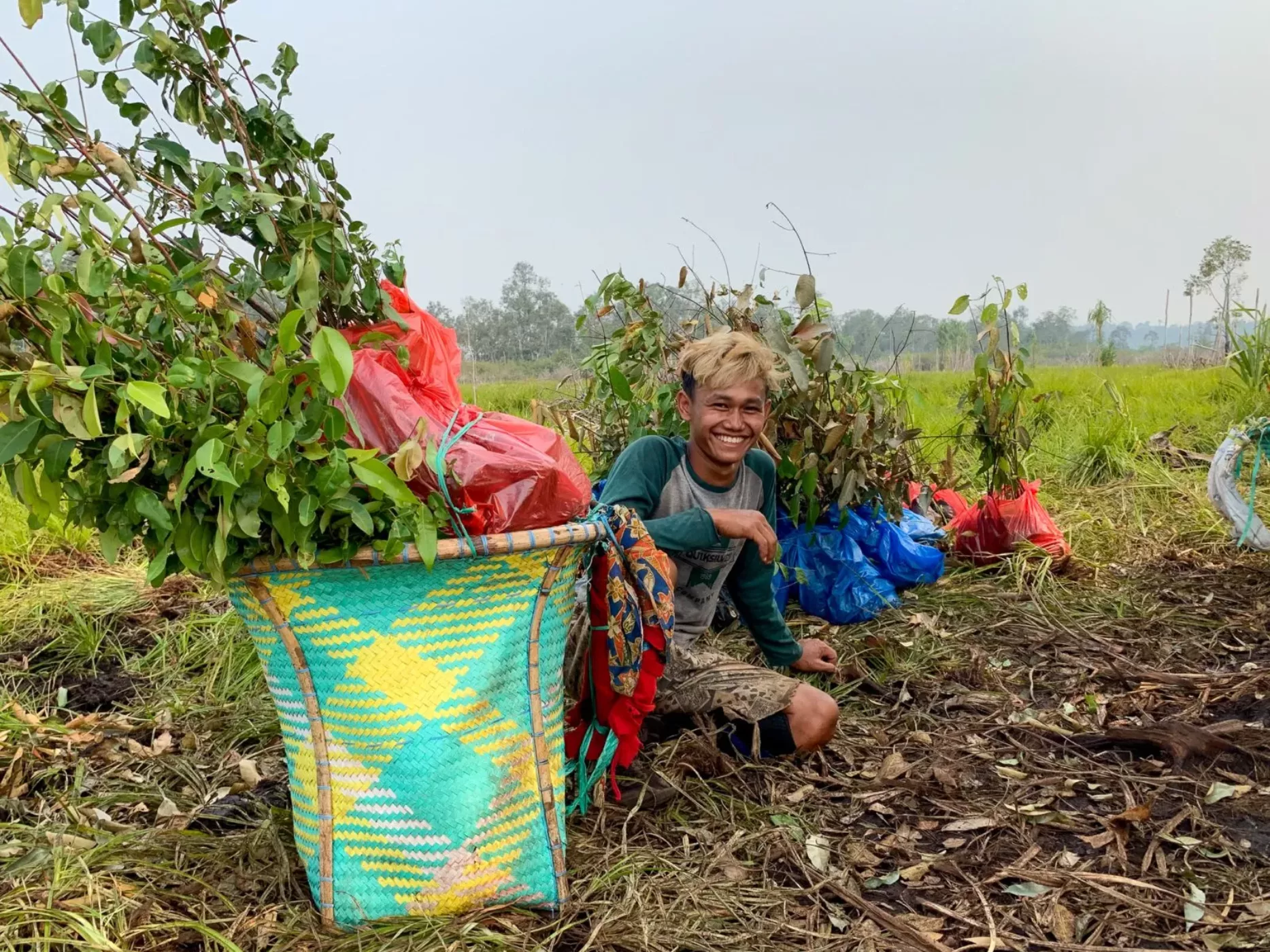
03 November 2023
In Borneo (Kalimantan) Trees for All works on the restoration of tropical rain forest. We do this together with our partner Borneo Nature Foundation (BNF). This year we are planting as many as 125,000 trees in Sebangau National Park, in order to restore unique peat swamp forests. It is a project area full of challenges, making it a place to really leave an impact. September 2023 two Trees for All colleagues went to visit and see how our project is faring!
Beautiful Sebangau National Park is situated in the Indonesian section of Borneo island. It is a natural reserve of 570,000 hectares, where unique peat swamp forests occur. Unfortunately, large portions of this forest were destroyed by fire in 2015 and 2019. That is why we are planting 125,000 new trees, together with BNF.
This is not only important to restore nature, but also because the soil in this national park harbors one of the world’s largest stocks of carbon. Should the forest disappear, all of this CO2 would be released: a downright climate disaster. And one we want to prevent by keeping and restoring existing forest.
Forest restoration in Borneo is no easy task. Thus the peat swamp forest is submerged in water for the larger part of the year. Planting locations are situated in remote places and they are overgrown with ferns and sedge (a type of grass). In some places the soil has subsided, which causes black-water pools: pools of water heating up to boiling point in the sun.
These challenges make it necessary for us to check very carefully in which places to plant trees and where not to. For instance, it is impossible for baby trees to survive in black pools, as the heat will cause their roots to shrivel up. But they may not be planted in too dry spots, either. Fortunately BNF carries out thorough research into circumstances which make it possible to plant trees with more success. We were told everything about this during our project visit.
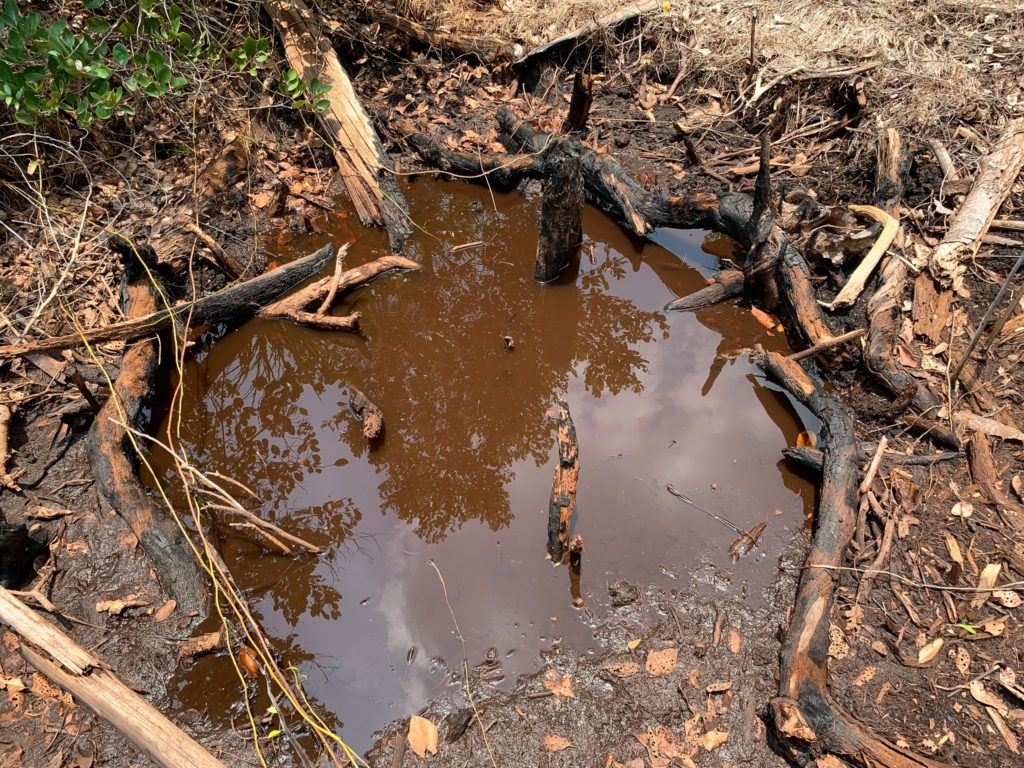
We were on the road with the local team for four days. We were accompanied by Berni and Pau, both of whom have been involved with BNF for some 15 years. Together we visited three different planting locations. In two of these locations the planting has already been done. The third location follows when rain starts to fall – hopefully soon!
We were impressed by the professional manner in which BNF does its job. The organization has been set up by academics and it shows in the operating procedure. Each planting area uses its own approach, in which trees have been planted according to a distinct model. Much attention is paid to monitoring the trees.. Many young trees have labels, so BNF may follow closely how they are doing. The first round of monitoring takes place after six months and subsequently yearly rounds will follow. And in the meantime all information about the growth of the trees is analyzed and kept.
We see this approach as a large additional value within the project. Planting trees is one thing, but what really matters eventually is that they grow into a strong and adult forest. BNF has shown this to be their very serious assignment.
Another challenge in Borneo is planting trees as such. We have experienced what an extremely heavy job planting in swamp land is. Local people, for whom our project is a source of income, transport the trees in baskets to one of the planting sites. This requires them to travel long distances across water and land. They may undertake some five return journeys in one day, three-kilometer trips to and fro. They will do this carrying about 30-kilogram baskets in temperatures amounting to 38ºC or higher, on paths which are hard to travel on.
During our visit we tried this ourselves. But even without the baskets, walking the tracks was quite a challenge for us. So we regard the way in which local people dedicate themselves to reafforestation with much admiration.
Baskets containing trees to be planted down the road in the National Park. Workers walk long distances in the heat to deliver them
During our project visit, we were “lucky” in one respect, as the soil was not too soggy and for that reason well passable. At the same time, this is the bad news: bone-dry peat is alarming. Because of El Niño weather phenomenon, hardly any rainfall occurs at the moment. Result? Water levels fall too low, causing the peat to emit large quantities of CO2. And even worse: the grounds are highly flammable. During the time we were visiting we saw fires erupting in the area.
Water management and firefighting are important aspects to make this project into a success. For that reason, BNF has created eight teams of firefighters from local communities, who check the areas around project locations for outbreaks of fire. Should the occasion arise, then these people have the proper equipment to extinguish them.
BNF also add to firefighting by keeping the project area as humid as possible (rewetting). In the past, many canals were dug in the project area for transporting (illegally) cut wood. BNF blocks these canals by building ‘live’ dams consisting of wood, peat soil and trees. The idea is that trees planted on the dams will eventually make a natural blockade. The project area will retain water and the water level will rise. Important to prevent fires, but also to make sure that the trees themselves will have enough water.
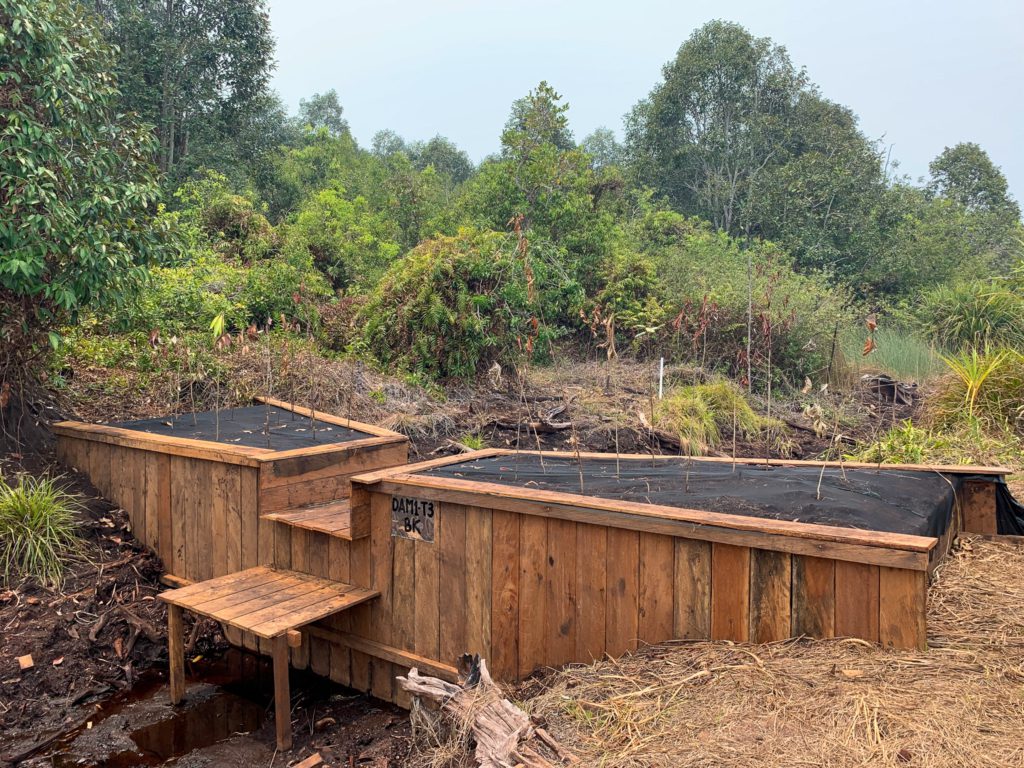
Protecting and planting forest go hand in hand within this project. But BNF does even more. The orang-outan population in Sebangau National Park is now under survey. We saw these magnificent creatures in the wild during our project visit. This was very impressive, as our project also contributes to additional habitat for these animals.
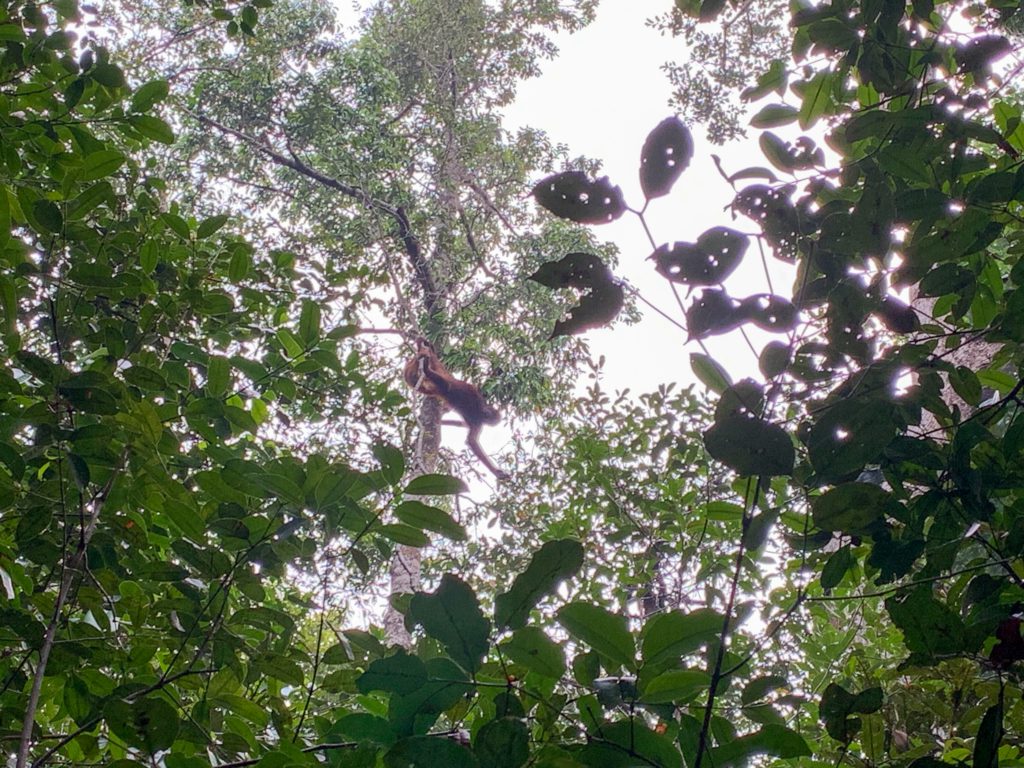
In addition, BNF is always busy creating community spirit. This means that BNF works closely together with the people who live in the vicinity of the forest. This is crucial, for it is the local population who can make sure the forest is both protected and preserved. The local population assist, e.g., in setting up tree nurseries. Moreover, BNF stimulates other activities procuring income and food, such as establishing vegetable gardens, fish farms or bee keeping. This creates quite a lot of surplus value for the project and broader support for BNF activities.
In the meantime we keep hoping for the first showers of rain. BNF will then plant the remaining part of the trees. But that will not mean the finishing of the project. In years to come we will remain involved and plant even more trees with the support of our benefactors.
We are involved financially, but also with respect to content. We share our know-how and experience with BNF, where people are openminded about feedback. A beautiful basis for long term co-operation, resulting in trees growing into healthy forest!
In the near future we will accentuate our plans. We are also going to investigate together how we might be able to improve the chances of survival for baby trees in some places, in spite of heat and drought. Thus we carry on, in good spirits. For if our project visit has shown us one thing, it is that restoring and protecting this forest is of global importance.
We monitor all our project with great care. For that reason we are involved in our projects for at least ten years. A large portion of our monitoring is done from a distance. Additionally, field visits constitute an important aspect of our policy in order to see how the trees are doing on the spot. These visits are highly appreciated by our project partners and the population involved. We are literally given a recognizable face and we show that we do not only offer support from a distance. Together we turn the project into a success.
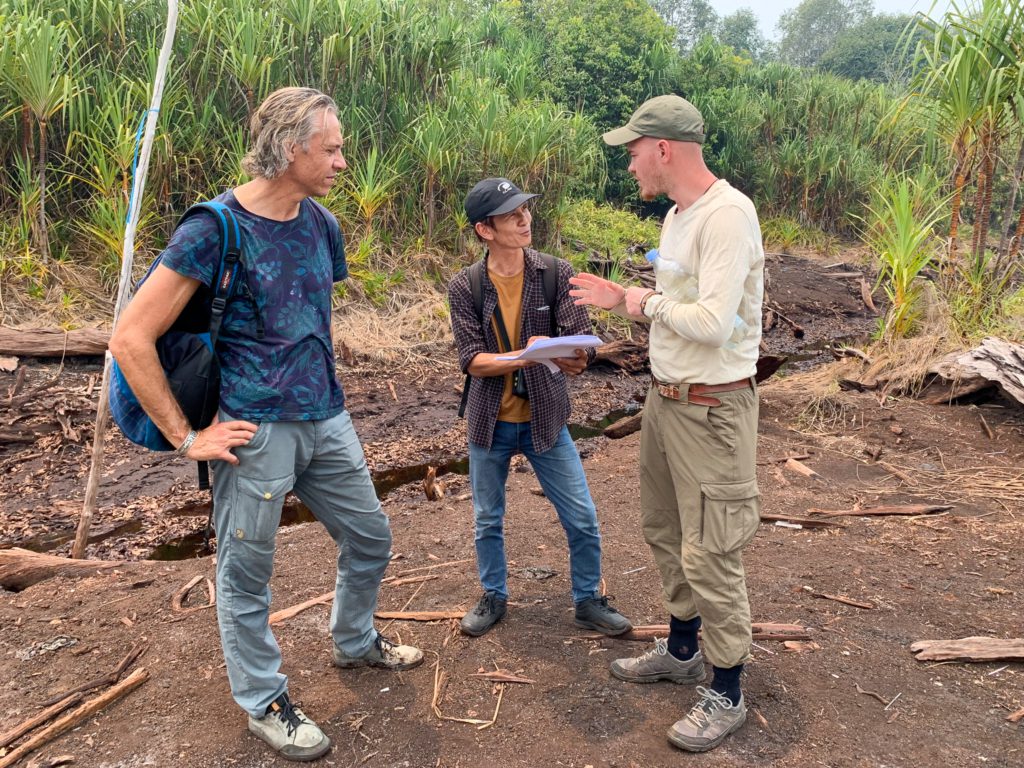
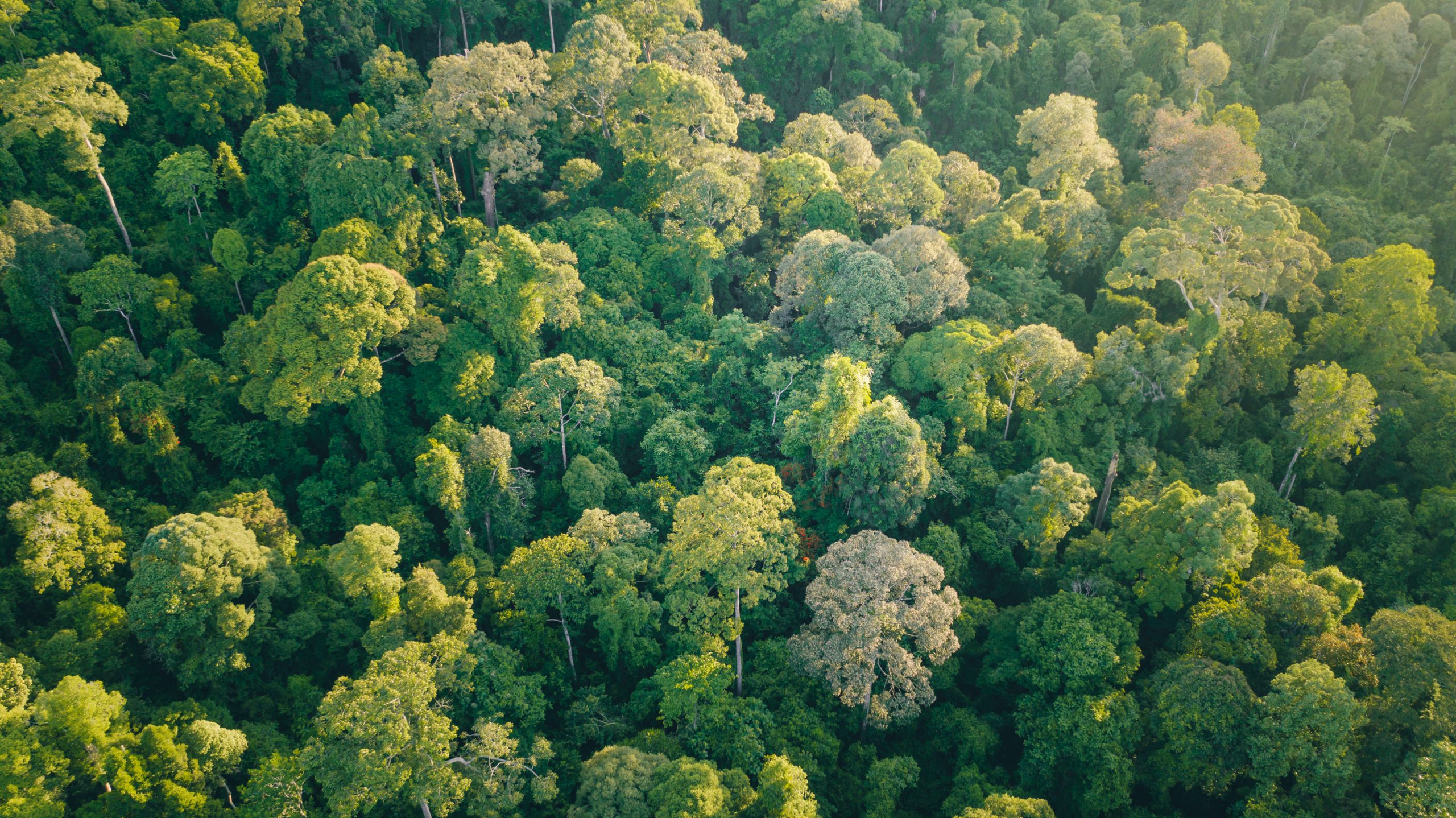
Do you also want to contribute to a forested world? Plant a tree in one of our forest projects! That way, together, we will ensure a liveable planet for us all.
Plant a tree